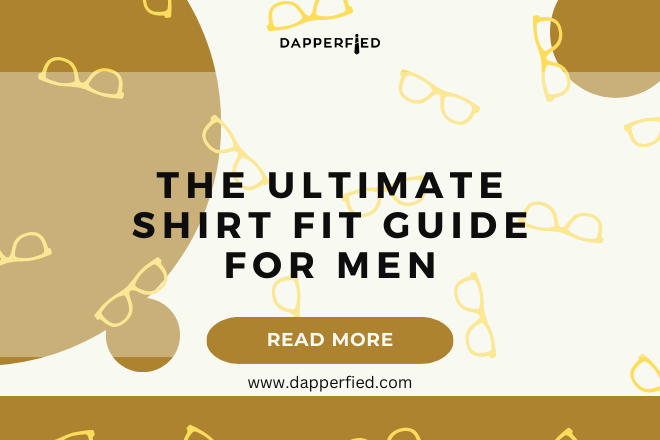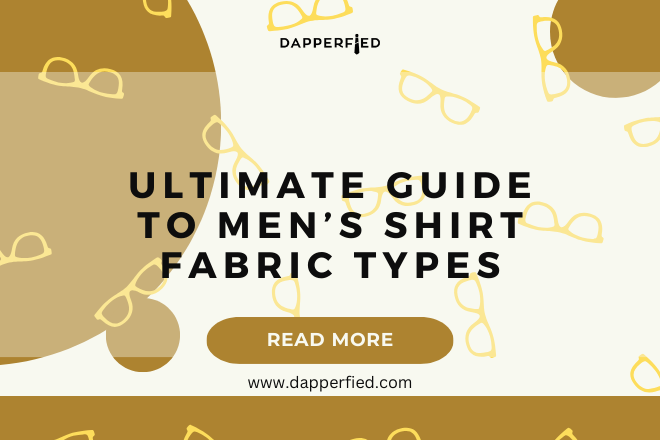
Men's Style
Mastering Men’s Shirt Tailoring: Essential Details for a Perfect Fit
When it comes to shirt measurements and sizing, it’s essential to understand the key measurements that determine the fit of a shirt. The most important measurements include the neck size, sleeve length, chest size, and waist size. The neck size is measured around the base of the neck, and it’s important to leave a little extra room for comfort. The sleeve length is measured from the center of the back of the neck to the shoulder, then down to the wrist. The chest size is measured around the fullest part of the chest, and the waist size is measured around the natural waistline.
In addition to understanding these key measurements, it’s also important to consider the different sizing systems used by different brands and manufacturers. While some brands use small, medium, and large sizing, others use numerical sizing such as 14.5, 15, 15.5, etc. It’s important to refer to the brand’s specific size chart to ensure a proper fit. Understanding shirt measurements and sizing is crucial for achieving a well-fitted shirt that looks and feels great.
Key Takeaways
- Understanding shirt measurements and sizing is crucial for finding the perfect fit.
- Select the right fabric and pattern for your shirt based on your personal style and the occasion.
- Master collar and cuff construction to elevate the look and feel of your tailored shirt.
- Perfect the fit by adjusting for your body shape and posture to ensure comfort and style.
- Learn tailoring techniques for a clean and professional finish to your shirt.
- Add personalized details such as monograms, buttons, and pockets to make your shirt unique.
- Care for your tailored shirts with maintenance and storage tips to keep them looking their best.
Selecting the Right Fabric and Pattern for Your Shirt
Selecting the right fabric and pattern for your shirt is essential for achieving the desired look and comfort. When it comes to fabric, there are various options to choose from, including cotton, linen, silk, and polyester. Cotton is a popular choice for its breathability and durability, while linen is known for its lightweight and airy feel. Silk is a luxurious option that offers a smooth and lustrous finish, while polyester is a synthetic option that is easy to care for and resistant to wrinkles.
In addition to fabric, the pattern of the shirt also plays a significant role in its overall appearance. Common patterns include solid colors, stripes, checks, and plaids. Solid colors are versatile and timeless, while stripes and checks add a touch of sophistication and style. Plaids are a classic choice that can be dressed up or down depending on the occasion. When selecting the right fabric and pattern for your shirt, it’s important to consider your personal style, the intended use of the shirt, and the season in which it will be worn.
Mastering Collar and Cuff Construction
Mastering collar and cuff construction is essential for creating a well-tailored shirt with a polished finish. The collar is one of the most prominent features of a shirt, and there are various styles to choose from, including point collar, spread collar, button-down collar, and club collar. Each style offers a different look and can be paired with different tie knots and lapel styles. When constructing the collar, it’s important to pay attention to details such as collar band width, collar point length, and collar roll for a clean and professional finish.
Cuff construction is another important aspect of shirt tailoring, with options including barrel cuffs, French cuffs, and convertible cuffs. Barrel cuffs are the most common style and feature a button closure, while French cuffs are more formal and require cufflinks for closure. Convertible cuffs offer versatility by allowing the use of either buttons or cufflinks. When mastering collar and cuff construction, attention to detail is key for achieving a high-quality finish that elevates the overall look of the shirt.
Perfecting the Fit: Adjusting for Body Shape and Posture
| Body Shape | Posture | Adjustment Techniques |
|---|---|---|
| Pear-shaped | Slouched | Choosing A-line skirts and dresses, wearing heels, and practicing good posture |
| Apple-shaped | Forward head posture | Wearing V-neck tops, avoiding high-necked tops, and doing neck exercises |
| Hourglass-shaped | Lordosis (swayback) | Wearing supportive bras, doing core-strengthening exercises, and avoiding high heels |
Perfecting the fit of a tailored shirt involves adjusting for body shape and posture to ensure optimal comfort and style. Different body shapes require different adjustments to achieve a well-fitted shirt. For example, individuals with a broader chest may need extra room in the chest area, while those with a slimmer waist may require darts or shaping to prevent excess fabric around the midsection. It’s important to take accurate measurements and make adjustments accordingly to achieve a flattering fit that complements the body shape.
Posture also plays a significant role in achieving a perfect fit. Individuals with a forward-leaning posture may require adjustments to prevent pulling at the back of the shirt, while those with a straight posture may need additional room in the upper back area for ease of movement. Making these adjustments ensures that the shirt drapes smoothly and comfortably over the body, enhancing both appearance and comfort. Perfecting the fit by adjusting for body shape and posture is essential for creating a tailored shirt that looks and feels great.
Tailoring Techniques for a Clean and Professional Finish
Tailoring techniques are crucial for achieving a clean and professional finish when making a shirt. Some key techniques include pattern matching, seam finishing, and precise stitching. Pattern matching involves aligning the pattern of the fabric at seams and other key areas to create a cohesive look. This attention to detail elevates the overall appearance of the shirt and demonstrates high-quality craftsmanship.
Seam finishing is another important technique that involves finishing raw edges to prevent fraying and ensure durability. Common seam finishing methods include serging, overlocking, and French seams. These techniques not only contribute to the longevity of the shirt but also add a professional touch to the interior finish.
Precise stitching is essential for creating clean lines and secure seams. Using the appropriate stitch length, thread tension, and needle size ensures that seams are strong and visually appealing. Additionally, techniques such as understitching and topstitching add structure and detail to key areas of the shirt. Mastering these tailoring techniques is essential for achieving a clean and professional finish that sets tailored shirts apart.
Adding Personalized Details: Monograms, Buttons, and Pockets

Adding personalized details to a tailored shirt allows for customization and individuality. Monograms are a popular option for personalization, with initials embroidered onto the cuff or chest area of the shirt. Monograms can be subtle or bold, depending on personal preference, and they add a unique touch to the shirt.
Buttons are another opportunity for personalization, with options including mother-of-pearl buttons, horn buttons, or custom-engraved buttons. The choice of buttons can complement the fabric and style of the shirt while adding a personalized touch.
Pockets are another customizable feature that can be added or omitted based on preference. Chest pockets are common on casual shirts, while dress shirts often feature a clean front without pockets. Adding personalized details such as monograms, buttons, and pockets allows individuals to create a tailored shirt that reflects their personal style and preferences.

Caring for Your Tailored Shirts: Maintenance and Storage Tips
Caring for tailored shirts is essential for preserving their quality and longevity. Proper maintenance includes following care instructions on garment labels, such as washing in cold water, using gentle detergent, and avoiding bleach or harsh chemicals. It’s important to handle shirts with care during washing and drying to prevent stretching or distortion of fabric.
Storing tailored shirts properly is also crucial for maintaining their shape and appearance. Hanging shirts on quality hangers with wide shoulders helps prevent wrinkles and maintains the shape of collars and cuffs. It’s also important to button all buttons before hanging shirts to prevent stretching or misshaping.
In addition to washing and storage tips, regular maintenance such as ironing or steaming shirts helps keep them looking crisp and polished. Ironing with the appropriate heat setting for the fabric type ensures smooth lines and a professional appearance. Following these maintenance and storage tips ensures that tailored shirts remain in top condition for years to come.
In conclusion, understanding shirt measurements and sizing is crucial for achieving a well-fitted shirt that looks great and feels comfortable. Selecting the right fabric and pattern contributes to both style and comfort. Mastering collar and cuff construction elevates the overall appearance of tailored shirts, while perfecting the fit by adjusting for body shape and posture ensures optimal comfort. Tailoring techniques such as pattern matching, seam finishing, precise stitching, as well as adding personalized details like monograms, buttons, and pockets contribute to a clean and professional finish. Caring for tailored shirts through proper maintenance and storage tips preserves their quality and longevity. By paying attention to these key aspects of shirt tailoring, individuals can create personalized shirts that reflect their unique style while maintaining high standards of craftsmanship.
If you’re interested in learning more about where to buy a suit, check out this article on Dapperfied. They provide great tips and recommendations for finding the perfect suit for any occasion.
FAQs
What are some common shirt tailoring details for men’s shirts?
Some common shirt tailoring details for men’s shirts include collar style, cuff style, placket style, and pocket style.
What is the importance of collar style in men’s shirt tailoring?
Collar style is important in men’s shirt tailoring as it can affect the overall look and formality of the shirt. Common collar styles include point collar, spread collar, and button-down collar.
What are the different cuff styles in men’s shirt tailoring?
Different cuff styles in men’s shirt tailoring include barrel cuffs, French cuffs, and convertible cuffs. Each style offers a different level of formality and can be customized with different closure options.

What is the significance of placket style in men’s shirt tailoring?
Placket style in men’s shirt tailoring refers to the strip of fabric that reinforces the front closure of the shirt. Common placket styles include French placket and standard placket, each offering a different aesthetic and level of formality.
Are there different pocket styles in men’s shirt tailoring?
Yes, there are different pocket styles in men’s shirt tailoring, including patch pockets, flap pockets, and welt pockets. The choice of pocket style can impact the overall look and functionality of the shirt.















